While the market is focusing on Xiaomi SU7, the real pioneers have already set their sights on the strategic model of 2025 - YU7 SUV. For this future chariot that is still in the blueprint, a core question emerges:how much does it cost to make aprototypeor key verification component for it?
But discussing "What is the price of Xiaomi YU7 auto parts?" is not a simple inquiry.This is essentially the core of a strategic dialogue on R&D efficiency, risk control and budget allocation.At the critical stage of YU7's transition from concept to engineering implementation, the cost of each verification component's manufacturing path selection is related to the precise control of the R&D rhythm and the optimal allocation of resources.
Price is just an appearance; the real game lies in: how to choose the "most correct" manufacturing process for YU7 at the right node of the product life cycle?This directly determines whether Xiaomi can efficiently bring this future SUV to the market at the best cost and lowest risk. The options that support this strategic implementation (such as3D printingor molds) and their cost logic are the key.
Comparison Of Cost Drivers For Three Prototyping Processes
To help you make a quick judgment, we first use a table to highly summarize the cost logic of different processes inprototype manufacturing.
| Features | CNC machining | Metal 3D printing (DMLS/SLM) | Prototype injection molds |
|---|---|---|---|
| Core cost drivers | Machine hours & manual programming | Machine hours & metal powder | Tooling fees |
| Ideal quantity range | 1 - 50 pieces | 1 - 5 pieces | 50 - 5,000+ pieces |
| Typical delivery cycle | Fast (a few days) | Fastest for complex parts (a few days) | Slowest to start (a few weeks to open the mold) |
| Most suitable scenarios | High-fidelity functional prototypes, strength test parts |
Unparalleled geometric freedom, topology optimization design |
Pre-production matching test, small batch collision test |
Why Discuss Future Cars? R&D Advantages
Discussing future concept car projects such as YU7 is far from being just talk on paper.The core is to position us as a strategic R&D partner of customers rather than a passive order executor.Our deep involvement in the earliest planning stage of the project can bring decisive advantages:
Technology foresight enables design:Based on mass production experience, we can intervene in the prototype stage to evaluate process feasibility, identify potential manufacturing bottlenecks or material limitations, and ensure that the imaginative design has a foundation for implementation.
Cost insight drives decision-making:Provide preliminary and accurate cost estimates at the same time, so that customers can find the best balance between design freedom and commercial feasibility, and avoid being forced to compromise core functions due to cost out of control in the later stage.
Risk radar is prepared for a rainy day:Conduct risk assessment in a forward-looking manner, systematically sort out potential minefields such as supply chain, technology maturity and regulatory compliance, and clear obstacles for the project.
The core value of this early collaboration is "prevention is better than correction". The cost of solving a potential problem at the drawing stage is much lower than making design changes after trial production or even before mass production. Our early involvement is to minimize the costly rework and delays in the later stage, and pave the most solid road for the ultimate efficient, reliable and economical mass production success. Cooperation in small moments can lead to a great victory in a long journey.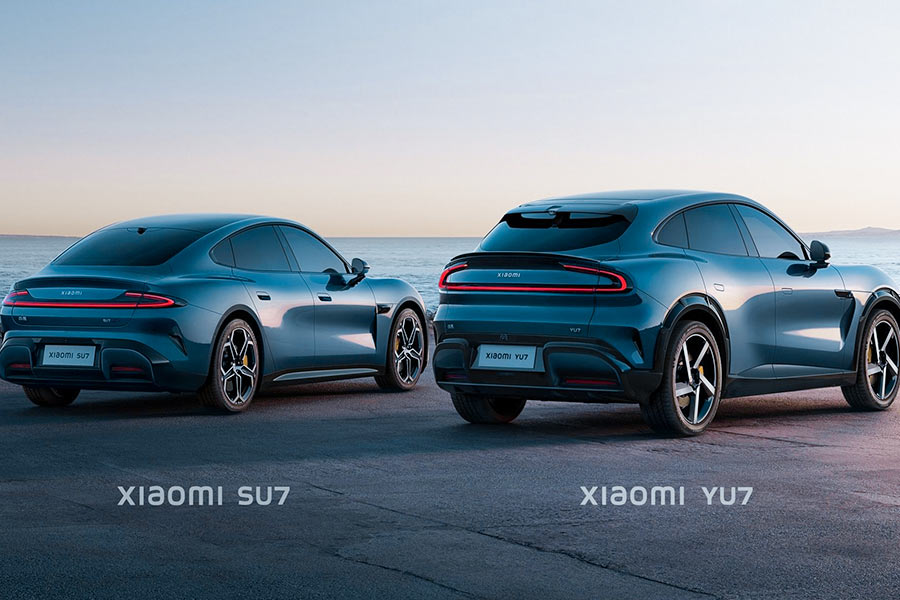
Scene Setting: From SU7 Sedan To YU7 SUV
SU7 sedan and YU7 SUV core design comparison
| Comparison dimension | SU7 sedan | YU7 SUV | Core differences and impacts |
|---|---|---|---|
| Core design goals | Extreme aerodynamics, low center of gravity, road handling performance | Versatility, space practicality, passability, adaptability to complex road conditions | The design goals are fundamentally different, driving huge differences in vehicle architecture and component design. |
| Body shape | Streamlined low body, low drag coefficient, low center of gravity. | High body, large ground clearance, square/practical shape, high drag coefficient. | YU7 needs stronger body rigidity to cope with complex road conditions and higher body. |
| Chassis structure | Lightweight is preferred, focusing on the balance between rigidity and lightweight. | High strength rigidity is preferred, and it needs to withstand greater torsion and impact loads. | YU7 chassis structural parts (longitudinal beams, cross beams, subframes) need to be thicker and stronger, and the material and process requirements are higher. |
| Suspension system | Sports tuning: low travel, high rigidity, pursuit of precise control and road feel. | Comfort/off-road tuning: long travel, high adaptability, emphasizing shock absorption and passability. | YU7 requires springs, shock absorbers, control arms, stabilizer bars of different designs, and may be equipped with a four-wheel drive system to adapt to the suspension. |
| Center of gravity and control | Extremely low center of gravity, providing agile steering and high-speed stability. | High center of gravity, focusing on driving stability (anti-roll) and adaptability to complex road conditions. | YU7 needs to strengthen anti-roll bars, optimize suspension geometry, and may introduce electronic stability systems to enhance control. |
| Interior space components | Compact and efficient: The seats are highly enveloping and focus on ergonomics of the driver's seat. | Spacious and flexible: The seat design emphasizes space and comfort, and the layout is flexible (such as sliding/folding).。 | YU7 requires larger seat frames, slide rails, more complex folding mechanisms, and larger interior covers. |
| Key parts demand | Aerodynamic components (spoilers, chassis guards), lightweight materials, precision control components (steering gears, brakes). | High-strength structural parts, long-travel suspension components, large-space interior parts, off-road related components (such as guards, drive systems). | YU7 has significantly increased the requirements for chassis structural strength, suspension system adaptability, and space component size/functionality. |
| Developing center of gravity transfer | Optimize airflow, reduce weight, and increase cornering limits. | Enhance rigidity, ensure safety and durability, improve space utilization, and adapt to multiple road conditions. | From "flying close to the ground" to "commuting on all road conditions", the design philosophy and engineering challenges have undergone a fundamental change. |
Core Cost Factor 1: Material Selection
Material selection is the core cost driver of the product, directly affecting:
- Raw material cost: The unit price of different materials varies greatly (such astitanium alloy>>aluminum alloy> steel).
- Processing cost:
- Difficulty: Difficult-to-process materials (titanium alloy, high-strength steel, high-fiberglass plastic) require expensive equipment, slow processing, durable tools, and high cost. Easy-to-process materials (ordinary aluminum alloy,ABS) are efficient and low cost.
- Forming/connection: Material properties affect process complexity and equipment investment (such as ultra-high-strength steel requires hot forming).
- Scrap rate: Difficult-to-process materials are more prone to defects, increasing costs.
- Post-processing: Metals often require heat treatment/rust prevention, and plastics may require annealing/surface treatment, which increases processes and costs.
- Molds/equipment: High-performance materials require higher specifications and more durable molds and equipment, with large initial investments.
Cost analysis of commonly used automotive materials:
1. Aluminum alloy (6061/7075):
Price: medium to high (7075 is more expensive).
Processing: easy to cut/form (6061 is especially good), good weldability.
Cost impact: The material cost is higher than steel, but the excellent strength-to-weight ratio, easy processing and corrosion resistance (minus post-processing) make it competitive in lightweight parts (body, chassis, wheels). 7075 is more expensive for high-stress parts.
2. High-strength steel (HSS/AHSS/UHSS):
Price: low to medium (the higher the strength, the more expensive).
Processing: poor cutting (fast tool wear), difficult forming (especially UHSS requires expensive hot forming),weldingneeds to be controlled.
Cost impact: The unit price advantage of the material is often offset by the high processing cost (especially hot forming equipment, molds, energy consumption). Used for safety structural parts that require high strength and light weight (A/B pillars, anti-collision beams).
3. Titanium alloy:
Price: Very high.
Processing: Extremely difficult to cut (slow speed, high tool wear), difficult to form/weld.
Cost impact: Sky-high raw materials plus extremely high processing costs, only used for extreme performance/weight reduction and cost-insensitive parts (high-performance car connecting rods, valves).
4. PA+GF (glass fiber reinforced nylon):
Price: Medium.
Processing:Injection moldingfluidity is acceptable, but glass fiber wears the mold (requires high hardness mold, high cost).
Cost impact: Good strength/rigidity/heat resistance. Reasonable material cost, but high mold investment. Commonly used to replace metal parts (structural parts, intake manifolds), often has cost advantages over complex processed metals.
5. ABS:
Price: Low to medium.
Processing: Excellent injection molding performance (good fluidity, high efficiency, low mold requirements).
Cost impact: Low material cost + extremely high processing efficiency/low scrap rate, one of the most cost-effective choices for large-volume non-structural parts (interior, exterior grilles/handles).
6. PC (polycarbonate):
Price: Medium-high.
Processing: Strict drying, high-temperature and high-pressure injection molding are required, annealing may be required, and transparent PC molds have high requirements.
Cost impact: Both material and processing costs are higher than ABS. Used for parts that require high impact resistance/transparency (headlight lenses, instrument covers), selected based on performance.
Material selection requires comprehensive evaluation: material unit price + processing difficulty/cost + scrap rate + post-processing + mold equipment investment + performance requirements (strength, weight, etc.). The goal is to achieve the best total manufacturing cost while meeting the requirements. Easy-to-process materials (such as ABS, ordinary aluminum) or comprehensive advantage materials (PA+GF) are often more cost-competitive than low-priced but difficult-to-process materials (high-strength steel) or sky-high-priced materials (titanium). The core is to balance performance and cost.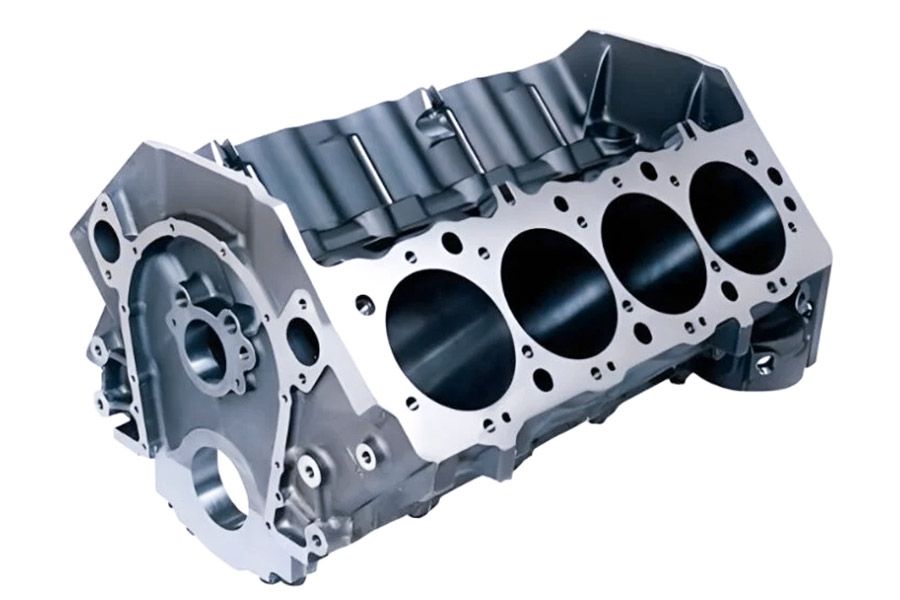
Core Cost Factor 2: Part Complexity And Tolerance
Every detail on the design drawing directly corresponds to the real money investment on the manufacturing side. The geometric complexity and dimensional tolerance of the parts are the two core cost drivers.
1. Complexity drives up costs:
(1) Features such as complex surfaces, deep cavities, and thin walls require:
More time-consuming advanced programming (CAM).
Slower cutting speeds and fine tooling (reduced efficiency).
More expensive equipment (such as the need to use afive-axis CNCinstead of a three-axis).
Special or more easily worn tools.
Higher clamping difficulty and scrap risk (especially thin walls are prone to deformation).
(2) Result: Equipment depreciation, labor hours, tool consumption, potential scrap costs, etc. have risen across the board.
2. Tight tolerances and soaring costs:
(1) Precision requirements (such as ±0.01mm vs ±0.1mm) do not increase costs linearly, but exponentially:
More cautious processing: multiple (rough/semi-finishing/finishing) processing, extremely slow speed, and micro-cutting depth are required, which greatly reduces efficiency.
Higher equipment requirements: Relying on top-level precision machine tools and constant temperature environment.
Stricter tool management: High-precision tools need to be checked/replaced frequently.
Inspection costs skyrocket: Precision measuring tools (such as three-coordinate measuring machines) must be used frequently, which is time-consuming and labor-intensive.
The risk of scrap/rework increases greatly: Under extremely narrow tolerance bands, slight vibrations, thermal deformation, or tool wear may lead to out-of-tolerance.
(2) Core point: For every extra zero after the decimal point, the cost may increase by one zero.
Design inspiration:
When designing, you must challenge: Is this feature/tolerance absolutely necessary for the function? Give priority to easy-to-process geometry and relax tolerances for non-critical parts. Communicate with the manufacturing team early to understand the cost impact of design decisions. Remember: every design decision is a cost bill.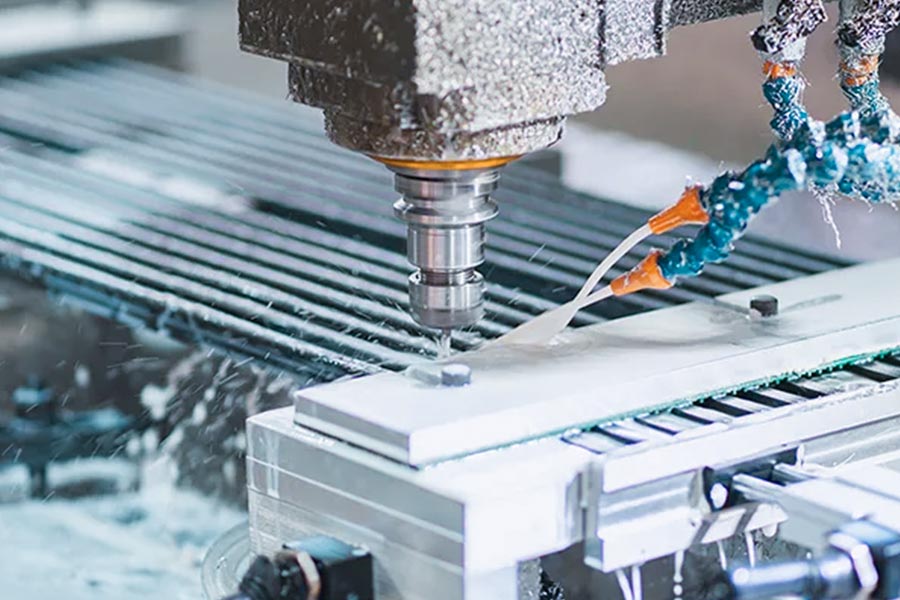
Core Cost Factor 3: Order Quantity And Intersection
In the manufacturing field, the order quantity is the key variable that determines the cost structure and has a profound impact on process selection. There is a huge difference between the startup cost (fixed cost) and the unit cost (marginal cost) of different processes, forming a distinct "intersection point" that determines the conversion of cost advantages:
CNC machining:a low-threshold stabilizer
Its biggest advantage is that the startup cost is extremely low and there is no mold fee, and the unit cost is relatively stable (mainly affected by materials and working hours). This makes it extremely competitive in small batch production of 1-100 pieces. Even if only a few pieces are made, the total cost is easy to bear and controllable, making it an ideal choice for prototype verification and pilot production.
Injection molding: the king of economies of scale
The high mold fee is its unavoidable "entry ticket" and the initial investment is huge. However, once this threshold is crossed, thanks to efficient cycle production, its unit cost can be reduced to an extremely low level. This characteristic determines that it can only dilute the initial cost and show overwhelming economies of scale in large-scale production of more than 500 pieces.
3D printing: the lone ranger of complex micro-batches
It also saves mold investment and is extremely flexible to start. However, the high material costs and machine operating costs make its unit cost much higher than other processes. Its core value lies in its unparalleled geometric freedom, making it the only or optimal solution for producing 1-5 ultra-complex structures (such as fine flow channels, topologically optimized lightweight components, and special-shaped parts that cannot be achieved by traditional processes).
Decision core: Finding the "intersection point"
A wise process choice lies in accurately calculating the critical output of cost balance. For example, in the range of 100 to 500 pieces, it is necessary to carefully compare the stable totalcost of CNCand the combination of "mold cost sharing + extremely low unit cost" of injection molding. 3D printing locks in value in complex micro-batch scenarios where traditional processes are limited. Understanding the intersection of these cost curves is the core strategy for optimizing the return on manufacturing investment.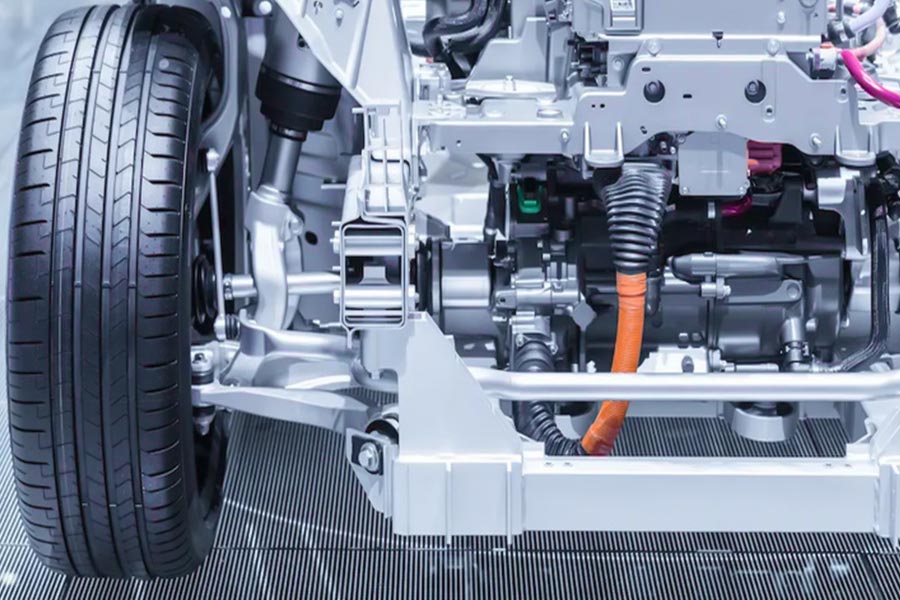
Case Study: Costing A YU7 Suspension Control Arm
Goal: To produce 10 functional YU7 rear suspension control arms for early road testing.
| Evaluation dimensions | Path A: CNC machining | Path B: Metal 3D printing (DMLS) | Path C: Prototype injection molding |
|---|---|---|---|
| Process | Milling of 7075 aluminum alloy block | AlSi10Mg powder laser melting + topology optimization | Aluminum soft mold injection molding (hypothetical scenario) |
| Core advantages |
|
|
Ultra-low unit cost (for large batches) |
| Core disadvantages |
|
|
|
| Unit cost | ¥5,000 | ¥8,000 | ¥300 (need to dilute mold costs) |
| Total cost of 10 pieces | ¥50,000 | ¥80,000 | ¥103,000 (including molds) |
| Production cycle | Short (standard machining process) | Medium (printing + post-processing time-consuming) | Long (mold manufacturing + trial molds) |
| Performance |
|
|
Limited material strength (usually engineering plastics) |
| Applicability |
|
|
|
Hidden Costs: Beyond The Price Of Each Part
When evaluating part costs, the explicit unit price is only the tip of the iceberg. Ignoring hidden costs will lead to out-of-control total cost of ownership.
I. DFM analysis: the source of cost control
(1) Value: Optimize design manufacturability in advance to avoid mass production traps.
(2) Hidden cost drivers:
Over-design: Deep holes, extremely small internal fillets, and unconventional wall thicknesses greatly increase processing difficulty and scrap rate.
Unnecessarily tight tolerances: Force the use of high-precision equipment and additional testing, and the cost increases exponentially.
Material process mismatch: Increase processing difficulty or post-processing costs.
(3) Action point: Collaborate with DFM as early as possible to balance functionality and manufacturing economy.
II. Post-processing: a "cost black hole" that cannot be underestimated
(1) Core links: surface treatment, heat treatment, deburring, assembly, etc.
(2) Key cost factors:
Surface treatment: anodizing (type/film thickness/color/masking complexity), painting (special color/masking/environmental protection).
Heat treatment: process selection (such as vacuum), deformation control requirements.
Deburring: precision parts require automated processes (electrolysis/thermal deburring), manual costs are high and unstable.
Assembly: customized tooling, testing and labor costs.
(3) Action points: clarify and quantify all post-processing requirements (such as Pantone color number, burr standard).
III. Logistics packaging: the "armor" cost of precision parts
(1) Risk points: quality and after-sales costs caused by transportation damage.
(2) Hidden investment:
Customized shockproof lining (EVA/blister tray).
Special protection such as anti-static (ESD) and moisture-proof (vacuum/desiccant).
Initial investment in turnover packaging.
(3) Action point: Based on the characteristics of the parts and the transportation environment, jointly develop a cost-effective protection plan.
Decisions must be based on the total cost of ownership
Real cost = explicit unit price + DFM optimization cost + post-process cost + protective packaging cost + quality risk cost.
Comparing unit prices alone may lead to subsequent cost overruns, delivery delays and quality risks. It is recommended to adopt a total cost framework evaluation plan. We will help you analyze the hidden links item by item and optimize the overall cost structure.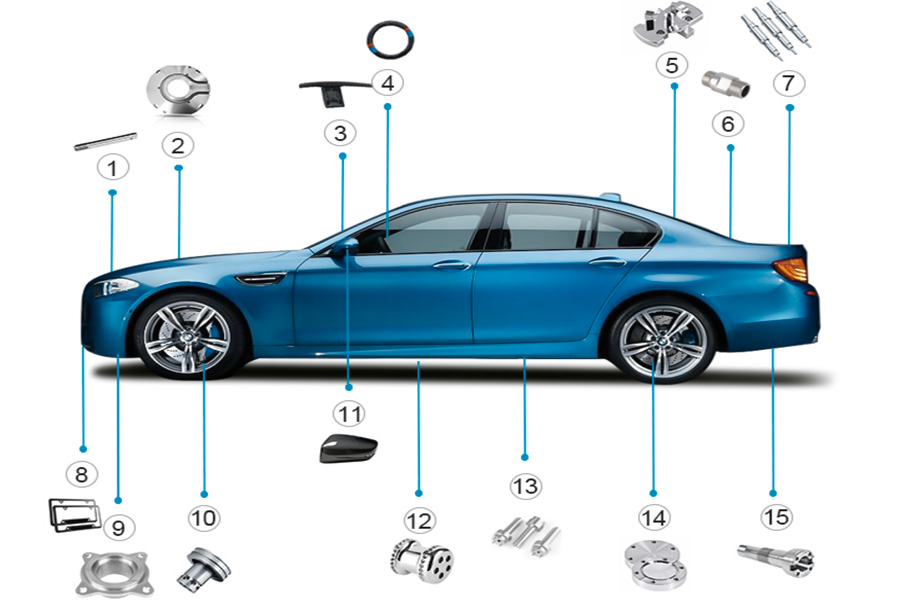
FAQ
1. How much will the cost of YU7 parts be reduced during mass production?
The cost reduction of YU7 parts during mass production depends on the order size, material utilization and production process optimization. Generally, mass production can achieve a 20%-50% cost reduction by allocating mold costs, increasing raw material purchase discounts and automated processing efficiency. The specific cost reduction needs to be combined with the order volume, design complexity and supply chain strategy.
2. Why is 3D printed prototype sometimes more expensive than CNC processing?
The high cost of 3D printing per piece is due to the high unit price of materials (such as photosensitive resin/metal powder) and time-consuming post-processing; while CNC has a high initial programming cost, but the unit price is significantly reduced when it is allocated to multiple pieces. Therefore, for small batches or extremely complex prototypes, 3D printing may be more economical, but CNC is more cost-effective for simple parts or medium batches.
3. At what stage should I consider opening a "soft mold" for prototype injection molding?
Soft molds are suitable for the pilot stage where 50-200 functional prototypes need to be verified, especially after the design is frozen and before the mass production hard mold is put into production. When the product requires real material performance testing, small batch user trials or shortened delivery cycle, soft molds can achieve samples close to mass production at 1/3-1/2 the cost of hard molds and in a shorter cycle, but the limited life requires batch control.
4. What documents do I need to provide in order to get an accurate quotation for YU7 parts?
Please provide a complete 3D model (STEP/IGS format), 2D engineering drawings (with tolerances and surface treatments), material specifications, estimated annual demand and quality certification requirements (such as ISO standards). If assembly is involved, a BOM list and key matching dimension descriptions need to be supplemented. Complete information can reduce process assumptions and ensure the accuracy of the quotation.
How Does LS Help You?
LS brings engineering expertise and uncompromising transparency to every single aspect of CNC machining:
- Instant and clear quotes:Our AI-driven platform analyzes yourCAD modelcomprehensively, incorporates material properties (machinability, hardness), geometric complexity, accuracy tolerances (e.g., IT7),multi-axis machiningapproach and post-processing needs, and instantaneously offers a quote with clear cost breakdown. You can clearly see where every cost is coming from, e.g., materials, machining hours, tools, clamping, etc., without hidden costs.
- Professional DFM checking (free of charge):Prior to ordering, our intelligent system integrates with a vast machining database and is reviewed by experienced engineers to proactively identify problems in the design that can increase costs or risks (such as thin walls, sharp corners, and difficult-to-machine features), and provide optimization suggestions based on actual combat experience to improve manufacturability and cost-effectiveness upfront.
- Professional engineering support:You have the backing of an experienced team ofaerospace,medicaland other engineering professionals. We work closely together to provide professional guidance for decision-making on materials (Machinability vs. performance), tolerance optimization (avoidance of unnecessarily strict exactness), process planning (economical tool path, efficient clamping set up) and post-processing selection, and translate technical strength and weaknesses of different solutions and cost/delivery time impact.
- Single-stop precision manufacturing:Integrating advanced equipment (3-axis to5-axis milling/turning compound) and end-to-end capabilities, with serious quality control (ISO 9001/AS9100), we provide seamless services from precision machining to expert post-processing (surface treatment, deburring, and testing). The process is open to view, and quality reports (e.g., FAI) are provided at critical nodes in order to ensure that the process is controllable and the results are accurate.
LS’ professionalism lies in its engineering background; our openness aims to establish trust. Let us provide your precision manufacturing needs through open and transparent cooperation.
Summary
The cost of Xiaomi YU7 auto parts is not a simple number, but a strategic decision related to R&D efficiency and market success. The process selection in the prototype stage (such as 3D printing, CNC or mold trial production) directly affects the development cycle and initial investment - accurate process matching can save up to 30% of R&D costs and 50% of time. If you rush to pursue low prices and ignore manufacturing feasibility, subsequent mass production may face hidden cost traps such as structural defects and material waste.
Whether you are designing a YU7 smart car bracket or a high-performance brake component, let us clear the cost fog for you! UploadCAD filesnow and get:
- Multi-process accurate quotation (response within 24 hours)
- Free manufacturability analysis report (avoid 10+ common design risks)
- Exclusive engineer consultation (optimal path planning from prototype to mass production)
📞Tel: +86 185 6675 9667
📧Email: info@longshengmfg.com
🌐Website:https://lsrpf.com/
Disclaimer
The contents of this page are for informational purposes only.LS seriesThere are no representations or warranties, express or implied, as to the accuracy, completeness or validity of the information. It should not be inferred that a third-party supplier or manufacturer will provide performance parameters, geometric tolerances, specific design characteristics, material quality and type or workmanship through the LS network. It's the buyer's responsibilityRequire parts quotationIdentify specific requirements for these sections.Please contact us for more information.
LS Team
LS is an industry-leading companyFocus on custom manufacturing solutions. We have over 20 years of experience with over 5,000 customers, and we focus on high precisionCNC machining,Sheet metal manufacturing,3D printing,Injection molding,Metal stamping,and other one-stop manufacturing services.
Our factory is equipped with over 100 state-of-the-art 5-axis machining centers, ISO 9001:2015 certified. We provide fast, efficient and high-quality manufacturing solutions to customers in more than 150 countries around the world. Whether it is small volume production or large-scale customization, we can meet your needs with the fastest delivery within 24 hours. chooseLS technologyThis means selection efficiency, quality and professionalism.
To learn more, visit our website:www.lsrpf.com








